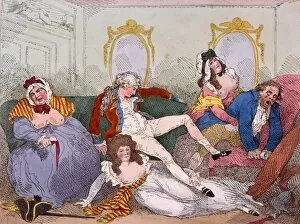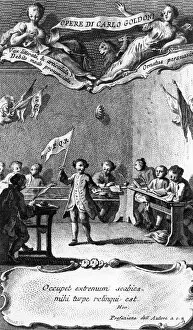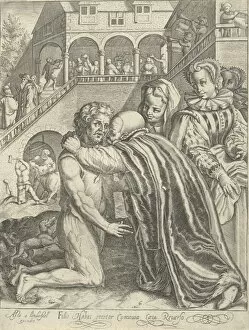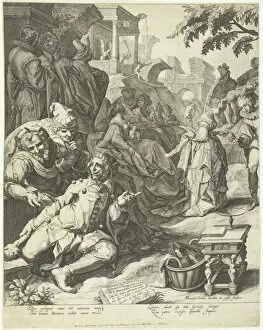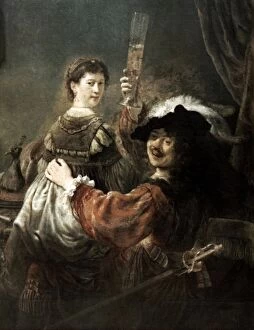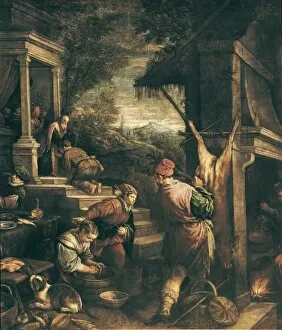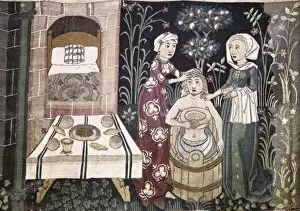Prodigal Collection (#2)
"The Return of the Prodigal Son: A Masterpiece by Rembrandt Harmensz van Rijn" Rembrandt Harmensz van Rijn, a renowned Dutch artist from the 17th century
Homecoming of the Prodigal Son, print maker: Nicolaes de Bruyn, Assuerus van Londerseel, 1581 - 1656
The prodigal son says goodbye to his father, Claes Jansz. Visscher (II), Willem Janszoon Blaeu, 1608
Expulsion of Hagar and Ishmael and the return of the prodigal son, Pieter van den Berge, 1694 - 1737
For sale as Licensed Images
Choose your image, Select your licence and Download the media
"The Return of the Prodigal Son: A Masterpiece by Rembrandt Harmensz van Rijn" Rembrandt Harmensz van Rijn, a renowned Dutch artist from the 17th century, created a captivating painting titled "The Return of the Prodigal Son" around 1668. This masterpiece depicts a powerful biblical story that continues to resonate with audiences today. In this poignant artwork, we witness the prodigal son's homecoming after squandering his inheritance in reckless living. The young man is depicted as disheveled and weary, humbly kneeling before his father who embraces him with open arms. The emotions conveyed through their expressions are profound – remorse mixed with unconditional love and forgiveness. Rembrandt's exceptional use of light and shadow adds depth to the scene, illuminating both characters' faces while casting darkness on other elements. This technique draws attention to the central figures and intensifies their emotional connection. "The Return of the Prodigal Son" serves as a visual representation of redemption and reconciliation. It reminds us that no matter how far we stray or how deep our mistakes may be, there is always hope for forgiveness and acceptance. This iconic painting has inspired countless interpretations throughout history. Its universal theme resonates across cultures and religions, reminding us all of our shared humanity. Whether viewed in person at an art gallery or reproduced in various forms such as chromolithographs or coloured engravings, its impact remains undiminished. Today, "The Return of the Prodigal Son" stands not only as one artist's interpretation but also as a timeless symbol of compassion and second chances. It invites viewers to reflect on their own journeys – moments when they have been lost but ultimately found their way back home. As we gaze upon this remarkable artwork by Rembrandt Harmensz van Rijn, let us contemplate our own capacity for forgiveness and empathy towards those who seek redemption.




